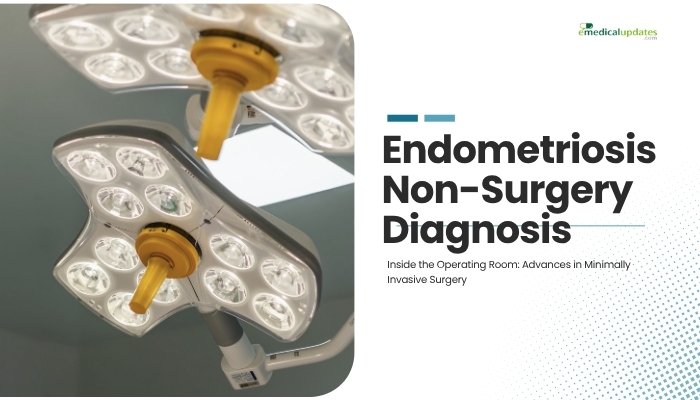Introduction
Alzheimer’s disease, the most common cause of dementia, gradually erodes memory, cognition, and the ability to perform daily tasks. While no cure exists, early diagnosis is crucial: it allows families to plan, consider emerging therapies, and possibly slow disease progression.
Until recently, confirming Alzheimer’s often required expensive or invasive procedures like PET scans or spinal fluid analysis. Now, scientists are making strides toward blood-based tests that measure key Alzheimer’s markers, offering a simpler, more accessible method for early detection.
This article explains how these blood tests work, their potential advantages over traditional diagnostics, and what they may mean for the future of Alzheimer’s detection.
Why Early Detection Matters
Benefits of Timely Diagnosis
- Medication Timing: Emerging Alzheimer’s treatments (including some monoclonal antibodies) can be more effective when started before significant neuronal damage.
- Patient and Family Planning: Recognizing cognitive decline early helps families arrange care, manage finances, and address legal matters.
- Lifestyle Adjustments: Evidence suggests targeted cognitive and physical exercises may help maintain function longer if begun early.
Traditional Diagnostic Challenges
- Imaging: PET scans tracking beta-amyloid or tau protein deposits can be expensive and not widely available.
- CSF Sampling: Lumbar punctures analyze cerebrospinal fluid for Alzheimer’s biomarkers, but many patients hesitate due to invasiveness and potential discomfort.
- Clinical Uncertainty: Mild cognitive impairment may have multiple causes, making definitive diagnosis complex without advanced testing.
How the Alzheimer’s Blood Test Works
Biomarkers in the Blood
In Alzheimer’s disease, characteristic proteins like beta-amyloid and tau accumulate in the brain. Traces of these proteins or their fragments can leak into the bloodstream. Blood assays look for:
- p-tau (Phosphorylated Tau): High levels correlate with Alzheimer’s pathology.
- Beta-Amyloid Ratios: Shifts in Aβ42 to Aβ40 ratio can indicate amyloid buildup in the brain.
- Neurofilament Light Chain (NfL): Reflects general neuronal damage; though not specific to Alzheimer’s, can support diagnosis when combined with more specific biomarkers.
Analytical Methods
- Immunoassays: Detect and measure proteins via antibodies.
- Mass Spectrometry: Precisely measures biomarker concentrations and isoforms for greater specificity.
- Proprietary Panels: Some tests combine multiple markers (e.g., p-tau, amyloid ratio, NfL) plus machine learning algorithms to increase accuracy.
Current State of Blood Tests
Commercially Available Tests
A handful of early blood-based assays have emerged, offering preliminary insight into Alzheimer’s risk:
- PrecivityAD™ by C₂N Diagnostics: Uses mass spectrometry to evaluate amyloid ratio in the blood, providing an “Amyloid Probability Score.”
- Other Lab-Developed Tests: Under limited commercial or research use.
While they’re not yet standard practice globally, some clinicians use them to complement other diagnostic information.
Accuracy and Validation
Clinical validation involves comparing blood test results against gold-standard measures (PET imaging or CSF biomarkers). Many reports show promising sensitivity (detecting disease when it is present) and specificity (ruling out disease when it is absent), but real-world data are still accumulating. Continued large-scale studies aim to refine test performance, particularly for earlier disease stages.
Regulatory Approvals
- U.S.: FDA typically reviews these tests as in vitro diagnostics. Some are available as laboratory-developed tests (LDTs), operating under different regulatory frameworks.
- Global: Requirements vary by region. Widespread official endorsement hinges on robust clinical evidence.
Advantages Over Traditional Methods
- Accessibility: Blood draws are far less invasive than lumbar punctures, enabling broader screening or routine monitoring.
- Lower Cost: As technology matures, test expenses could be substantially lower than PET scans, making early detection feasible on a large scale.
- Scalable Screening: Potentially used in primary care settings for symptomatic individuals or high-risk groups with family history or genetic predispositions.
Limitations and Considerations
Interpretation of Results
An abnormal blood test suggests increased Alzheimer’s risk, not a definitive diagnosis. Confirmatory imaging or clinical evaluation often follows. Also, individuals with elevated amyloid or tau biomarkers might not develop full symptomatic disease. This raises questions about:
- False Positives: Could cause anxiety if a positive reading doesn’t translate to eventual clinical disease.
- Counseling: Ensuring patients understand the meaning of biomarker results and their uncertain predictive power.
Ethical and Psychological Concerns
- Emotional Impact: Receiving an “Alzheimer’s risk” result can be distressing without immediate therapeutic solutions.
- Insurance and Employment: Data on predisposition might affect long-term care insurance or other policies if confidentiality isn’t maintained.
Ongoing Research
Better biomarkers are needed for early disease stages, especially for mild cognitive impairment. Additionally, combining blood tests with other modalities (like cognitive assessments or digital biomarkers) may yield more robust early detection strategies.
Integrating Blood Tests into Healthcare
Complementing Clinical Assessments
Primary care doctors could use these tests when patients present with memory complaints, or to screen older adults at higher risk, followed by specialized referrals. Geriatricians, neurologists, and memory clinics might incorporate them to streamline patient triage for further diagnostic procedures.
Potential Roles in Trial Enrollment
Pharmaceutical firms developing new Alzheimer’s treatments need participants with early or preclinical disease. Blood tests can identify suitable candidates more easily, accelerating research and possibly leading to effective interventions that slow or halt progression before significant damage occurs.
Next Steps for Widespread Adoption
Ultimately, broad acceptance demands:
- Proven Clinical Utility: Demonstrable improvements in patient outcomes when used.
- Cost-Benefit Analysis: Lower cost relative to more advanced diagnostics or the broader financial burden of advanced dementia.
- Guideline Endorsements: Official recommendations from bodies like the Alzheimer’s Association, regulatory agencies, or medical societies.
Frequently Asked Questions
- Does a positive test mean I will definitely get Alzheimer’s?
- No. Biomarker elevations increase risk but don’t guarantee clinical progression. Further evaluation is needed.
- Are these tests covered by insurance?
- Coverage is variable. Some insurers may consider them experimental until more robust data emerges. Patients should consult their provider and insurance plan.
- Is this a screening tool for everyone over 65?
- Not yet. Widespread screening remains debated. Current usage focuses on symptomatic individuals or those at high risk.
- What about other dementia types?
- These tests primarily detect Alzheimer’s pathology (amyloid, tau). Dementias like Lewy body or frontotemporal disorders have different biomarkers.
- How can I get tested?
- Speak with your physician. Some centers offer experimental or lab-developed blood tests, though availability varies by region.
Conclusion
The evolving field of Alzheimer’s blood tests stands poised to reshape the diagnostic landscape for dementia, making screening simpler and far more accessible. Although not yet perfect, these assays open opportunities to identify individuals at risk or in earliest disease phases—when interventions might be more effective. As clinical trials refine accuracy, cost, and real-world usage, experts anticipate these tests could become a cornerstone of routine dementia workups. For families and patients concerned about memory changes, the possibility of a straightforward blood test is encouraging, offering earlier insight into a condition historically verified only through more invasive, expensive methods.
Nevertheless, caution remains. Ethical, psychological, and financial implications must be addressed. Ultimately, maturing biomarker science may enable a new era of proactive Alzheimer’s care—where earlier detection pairs seamlessly with emerging therapies to maintain cognition and quality of life for those at risk.
References
-
- Nakamura A, et al. (2018). “High performance plasma amyloid-β biomarkers for Alzheimer’s disease.” Nature.
-
- Janelidze S, et al. (2020). “Plasma p-tau181 in Alzheimer’s disease.” Ann Neurol.
-
- Hansson O, et al. (2021). “Blood tests to detect Alzheimer disease.” JAMA Neurology.
-
- C2N Diagnostics. (2023). “Development of blood test for early Alzheimer’s detection.”
-
- Bateman RJ, et al. (2021). “Preclinical Alzheimer’s disease and implications of blood-based biomarkers.” Nat Med.




